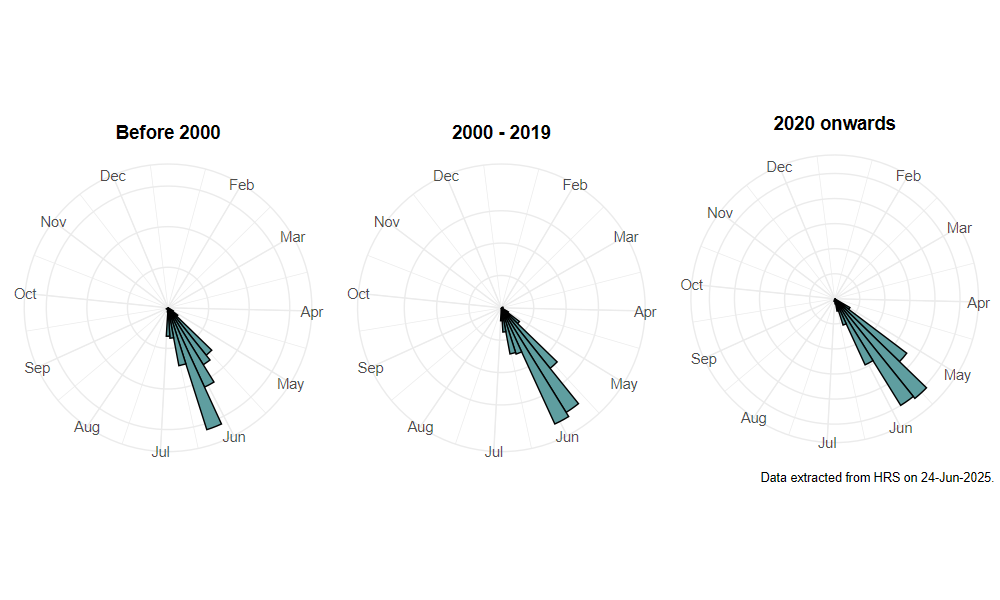Microdon myrmicae Schönrogge, Barr, Wardlaw, Napper, Gardner, Breen, Elmes & Thomas, 2002
Identification
Identification difficulty = 5. ![]()
![]() according to Ball & Morris, 20241
according to Ball & Morris, 20241
Synonymy
The 'Microdon mutabilis' of earlier works (e.g. Stubbs & Falk (1983)2) was split by Schonrogge et al. 20023, into two species M. mutabilis and M. myrmicae. Most of the records formerly ascribed to M. mutabilis are believed to relate to M. myrmicae.
Biology
The larva is associated with ant nests, and at the moment the principal host appears to be Myrmica ruginodis which is a widespread and common ant that favours cooler temperatures than many others within the genus. Larvae are nost readily found in nests formed in grass tussocks in wet areas. Adults cannot be distinguished from those of M. mutabilis, so records rely on locating and identifying larvae and pupae. Adults are generally found in the vicinity of ant nests and do not appear to visit flowers. They are most often found resting on the vegitation or hovering low over paths and other areas of bare ground.
Flight period
The following plots show the number of unique records per week excluding those reported to be of immature stages.

Status
Lower Risk (Nationally scarce) - Ball & Morris, 20144. Notable - Falk, 19915. Rare (RDB3) - Shirt, 19876.
Distribution
This seems to be a highly localised species that occurs in southern and western England and Wales, including Cornwall, Devon, Hampshire and Surrey, mid-Wales and Cumbria. Can be reasonably abundant where it occurs.

Trends
The following plots show the Frescalo TFactor vs year and a map of the rescaled frequency (all records) for the species.
-
Ball, S., & Morris, R. (2024). Hoverflies of Britain and Ireland. WILDGuides (3rd ed.). Oxford: Princeton University Press. ↩
-
Stubbs, A., & Falk, S. (1983). British Hoverflies: An Illustrated Identification Guide (1st ed.). Reading: BENHS. ↩
-
Schőnrogge, K., Barr, B., Wardlaw, J., Napper, E., Gardner, M., Breen, J., Elmes, G., & Thomas, J. (2002). When rare species become endangered: cryptic speciation in myrmecophilous hoverflies. Biological Journal of the Linnean Society, 75, 291–300. ↩
-
Ball, S., & Morris, R. (2014). A review of the scarce and threatened flies of Great Britain. Part 6: Syrphidae. ( No. 9). Species status (pp. 1–130). Peterborough: JNCC. ↩
-
Falk, S. (1991). A review of the scarce and threatened flies of Great Britain. ( No. 39). Research and Survey in Nature Conservation (pp. 1–194). Peterborough: NCC. ↩
-
Shirt, D. (Ed.). (1987). Red Data Books: 2. Insects. Peterborough: NCC. ↩